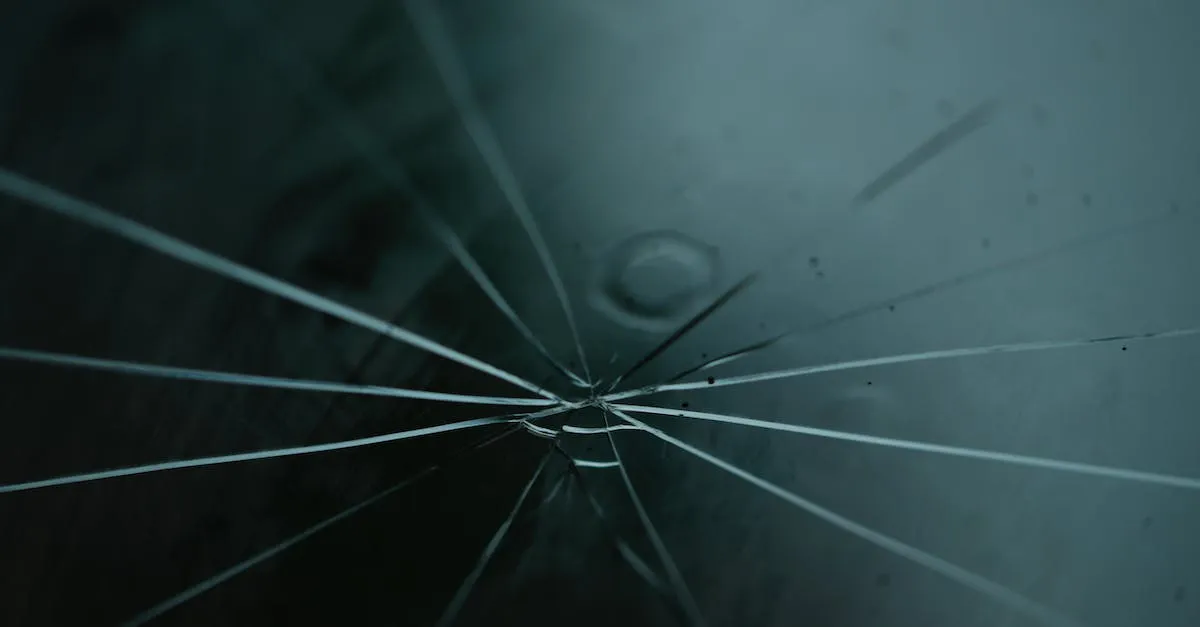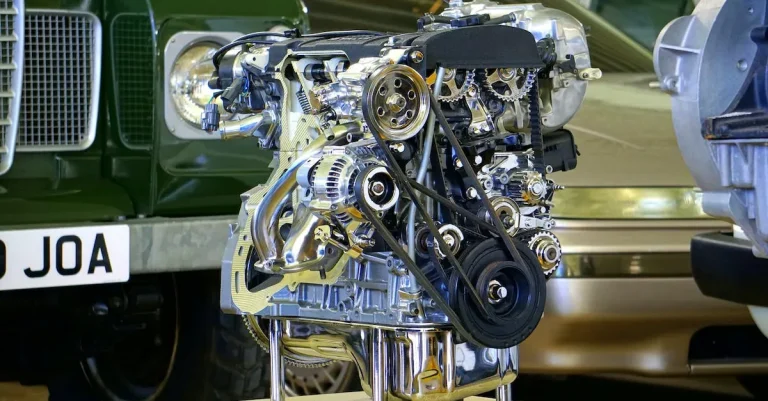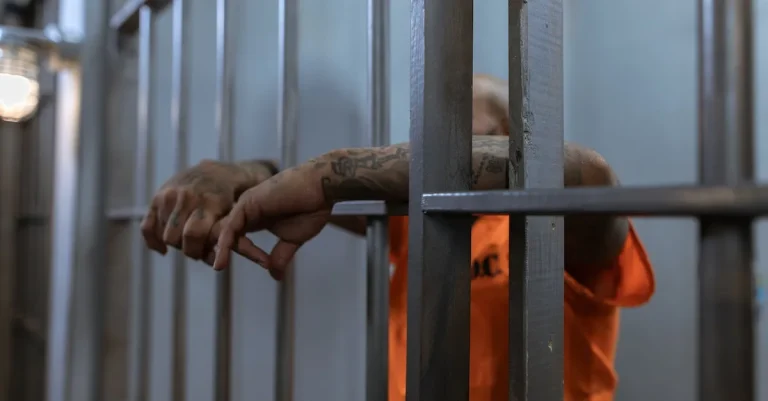Will A Cracked Windshield Pass Inspection In Texas?
If you have a small crack in your windshield, you may be wondering if your car will pass the state inspection in Texas. The short answer is maybe – it depends on the severity and location of the crack. Minor cracks and chips outside of the driver’s direct line of sight may be permitted, but larger, more intrusive cracks likely will not pass.
In this comprehensive guide, we’ll cover everything you need to know about cracked windshields and passing inspection in Texas. We’ll look at Texas’ specific windshield laws, where cracks are allowed or prohibited, how inspectors evaluate cracks, options for repair and replacement, costs, and tips for passing inspection with minor cracks.
Texas Laws on Cracked and Damaged Windshields
When it comes to the safety of drivers and passengers, Texas has specific laws in place regarding the condition of windshields. It’s important for all vehicle owners to understand these laws to avoid any legal issues and ensure the safety of everyone on the road.
Legal Requirements for Windshield Condition
In Texas, the law states that windshields must be free from any cracks that impair the driver’s vision. This means that if your windshield has a crack that obstructs your view, it may not pass inspection.
However, if the crack is outside of the driver’s line of sight or smaller than a certain size, it might still be considered safe and pass inspection.
According to the Texas Department of Public Safety, cracks that are smaller than three inches in diameter, or smaller than one and a half inches if they are within the area directly in front of the driver, are generally acceptable.
However, it’s important to note that these guidelines may vary depending on the specific county or city where the inspection is conducted.
Crack Location and Driver Visibility
The location of the crack on the windshield is a crucial factor in determining whether it will pass inspection. If the crack is in the driver’s line of sight, it is considered a safety hazard and will likely fail inspection.
Even if the crack is not directly in the line of sight, it may still be considered a violation if it impairs the driver’s ability to see clearly.
To ensure driver visibility, it is recommended to repair or replace a cracked windshield as soon as possible. Not only will this help you pass inspection, but it will also prevent further damage and ensure your safety on the road.
Penalties for Cracks That Fail Inspection
If your windshield fails inspection due to a crack that violates Texas laws, you may face penalties and fines. These penalties can vary depending on the severity of the violation and the jurisdiction where the inspection takes place.
In addition to the legal consequences, driving with a cracked windshield can also put you at risk of accidents and injuries. A cracked windshield is more susceptible to shattering upon impact, which can cause serious harm to the driver and passengers.
Therefore, it’s always best to address any cracks or damages promptly to ensure your safety and compliance with Texas laws.
For more information on Texas laws regarding cracked windshields and vehicle inspections, you can visit the official website of the Texas Department of Public Safety: https://www.dps.texas.gov/.
Windshield Inspection Criteria in Texas
When it comes to windshield inspections in Texas, there are certain criteria that must be met in order to pass. Inspectors have some discretion when it comes to crack severity, but there are also specific types of cracks that are more likely to pass or fail.
It’s important to understand the guidelines and regulations surrounding windshield inspections in Texas to ensure you’re in compliance.
Inspector Discretion on Crack Severity
Inspectors in Texas have some discretion when it comes to determining whether a cracked windshield will pass inspection. While there are no specific rules regarding the size or length of a crack, inspectors will consider the overall severity and safety implications of the crack.
If the crack obstructs the driver’s view or poses a safety hazard, it is likely to result in a failed inspection. However, if the crack is minor and not obstructing the driver’s view, it may be deemed acceptable.
Types of Cracks Most Likely to Pass or Fail
While there are no hard and fast rules, there are certain types of cracks that are more likely to pass or fail inspection in Texas. A small, single crack that is outside of the driver’s line of sight is less likely to result in a failed inspection.
However, a crack that extends across the windshield or is located in the driver’s line of sight is more likely to be deemed unsafe and result in a failed inspection. It’s also worth noting that cracks that have begun to spread or have multiple branches are generally more likely to fail inspection.
Documenting and Appealing Failed Inspections
If your windshield fails inspection in Texas, it’s important to understand the process for documenting and appealing the decision. You have the right to request a written explanation of the reasons for the failed inspection, as well as any photographic evidence taken by the inspector.
If you believe the decision was unfair or incorrect, you can appeal the decision by following the specific procedures outlined by the Texas Department of Public Safety. It’s always a good idea to consult the official Texas DPS website for the most up-to-date information on inspection processes and requirements.
Repairing vs. Replacing a Cracked Windshield
When it comes to a cracked windshield, the question often arises whether to repair it or replace it altogether. The decision depends on various factors, including the size, location, and severity of the crack.
It is important to understand when repair is sufficient and when replacement becomes necessary to ensure the safety and compliance with inspection regulations.
When to Repair Cracks
In Texas, minor cracks can often be repaired instead of replacing the entire windshield. The general rule of thumb is that cracks smaller than 6 inches in length can usually be repaired. However, it is important to note that there are limitations on the number and location of cracks that can be repaired.
For example, if there are multiple cracks or if the crack is in the driver’s line of sight, repair may not be possible.
Repairing a crack involves injecting a special resin into the damaged area, which helps to prevent further spreading and restore the structural integrity of the windshield. This process typically takes less time and is more cost-effective compared to a full windshield replacement.
When Replacement is Necessary
There are instances when a cracked windshield must be replaced rather than repaired. If the crack is larger than 6 inches in length or if it extends to the edge of the windshield, replacement is usually required.
Additionally, severe cracks that impair the driver’s visibility or compromise the structural integrity of the windshield will also necessitate replacement.
Windshield replacement involves removing the damaged windshield and installing a new one using adhesive. This process ensures a proper fit and ensures that the windshield meets safety standards. Although it may be more expensive than repair, replacement is often the only viable option for more severe cracks or damage.
DIY Temporary Fixes Before Inspection
If you have a cracked windshield and need to pass inspection in Texas, there are a few temporary fixes you can try to improve the appearance and prevent further damage. One option is using a clear nail polish or windshield repair kit to fill in the crack temporarily.
While these fixes may not be a permanent solution, they can help buy some time before you can arrange for a repair or replacement.
It is important to note that relying on temporary fixes for an extended period is not recommended, as they may not provide the necessary structural integrity or visibility required for safe driving. It is always best to consult with a professional and have the windshield properly repaired or replaced to ensure compliance with inspection regulations and your own safety on the road.
If you want more information about windshield repair and replacement regulations in Texas, you can visit the official website of the Texas Department of Public Safety at www.dps.texas.gov.
Cost of Windshield Replacement in Texas
Average Replacement Costs
The cost of windshield replacement in Texas can vary depending on several factors. On average, the price ranges from $150 to $400, depending on the make and model of the vehicle. Luxury cars and vehicles with advanced driver-assistance systems (ADAS) may have higher replacement costs due to the specialized equipment required.
Factors Affecting Cost
Several factors can affect the cost of windshield replacement in Texas. One of the main factors is the type of windshield being replaced. Different types of windshields have different materials and features, which can impact the cost.
Additionally, the complexity of the replacement process, such as the need to recalibrate ADAS systems, can also affect the overall cost.
Other factors that can influence the cost include the location of the repair shop, the availability of replacement parts, and the labor charges. It’s always a good idea to get multiple quotes from different repair shops to ensure you’re getting the best price.
Insurance Coverage Options
If you have comprehensive insurance coverage, your windshield replacement may be covered. Many insurance policies in Texas cover windshield damage and replacement without requiring you to pay a deductible.
However, it’s important to check with your insurance provider to understand the specific terms and conditions of your policy.
Some insurance companies also offer optional windshield replacement coverage, which can be added to your policy for an additional premium. This coverage can help protect you from unexpected windshield repair or replacement costs.
It’s worth noting that even if your insurance covers windshield replacement, you may still need to pay for any recalibration or additional services required for ADAS-equipped vehicles.
For more information about windshield replacement costs and insurance coverage options in Texas, you can visit the Texas Department of Insurance website.
Tips for Passing Inspection with Cracked Windshield
Get Cracks Evaluated Early
If you have a cracked windshield and you’re concerned about passing inspection in Texas, it’s important to get the cracks evaluated early. Cracks can spread and worsen over time, making it more difficult to pass inspection.
By getting them evaluated early, you can determine the severity of the damage and take appropriate action.
One way to evaluate the cracks is by measuring their length. In Texas, cracks longer than six inches or chips larger than three-eighths of an inch in diameter are considered significant damage and may result in a failed inspection.
However, it’s always best to consult with a professional to get an accurate assessment.
Repair Minor Damage Beforehand
If the cracks in your windshield are considered minor, you may be able to repair them before the inspection. This can increase your chances of passing and save you from having to replace the entire windshield.
There are various DIY windshield repair kits available on the market that can be used to fix minor cracks and chips. However, it’s important to note that these kits are only suitable for small, superficial damage. For more severe cracks or chips, it’s recommended to seek professional help.
It’s worth mentioning that even if you repair the cracks, it’s still a good idea to have a professional evaluate the windshield before the inspection to ensure it meets the necessary requirements.
Know Your Legal Rights
While Texas has specific guidelines regarding windshield cracks, it’s important to understand your legal rights as a vehicle owner. In some cases, you may be exempt from having to repair or replace a cracked windshield.
For example, if you have comprehensive insurance coverage, some policies may cover windshield repairs or replacements without any out-of-pocket expenses. Additionally, if the crack is a result of a collision or other covered incident, you may be entitled to a free repair or replacement under your insurance policy.
It’s always a good idea to review your insurance policy and consult with your insurance provider to understand what coverage you have for windshield repairs or replacements. This can help you make an informed decision about whether to repair the crack before the inspection.
For more information on Texas inspection requirements and guidelines, you can visit the official website of the Texas Department of Public Safety at https://www.dps.texas.gov/rsd/vi/inspectionsandinspector.htm.
Conclusion
While Texas allows minor cracks and chips outside the driver’s immediate sight lines, larger visible cracks likely will fail inspection. Knowing the specific laws, repair options, and your rights can help ensure your cracked windshield either passes muster or is fixed promptly. With early action on minor damage, you can avoid the hassle and cost of total windshield replacement.








